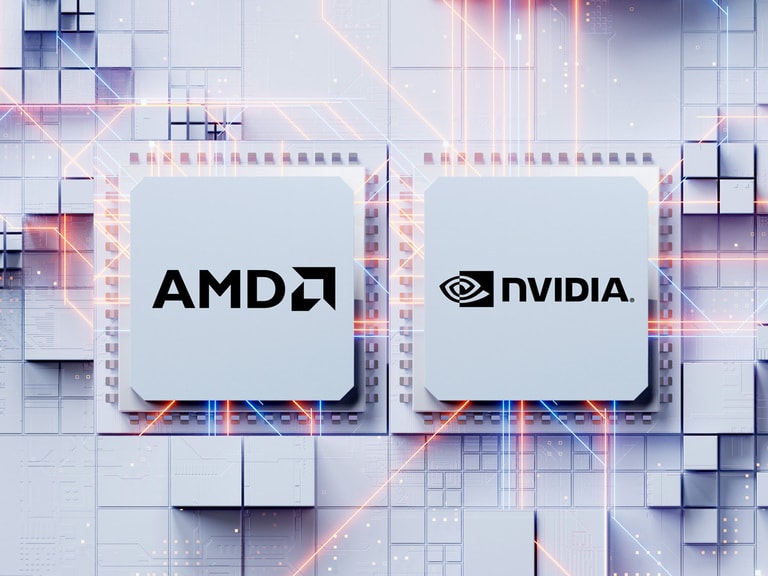Snowflake [SNOW] is a Montana-headquartered cloud storage company that sells data analytics and management software.
Its platform runs on public cloud infrastructures, such as Amazon’s [AMZN] AWS, Alphabet’s [GOOGL] Google Cloud and Microsoft [MSFT] Azure.
Snowflake is the market leader in data warehousing, with a 20.45% share of the market based on the estimated number of customers, according to 6sense. Amazon Redshift is second, with a 16.08% share, followed by Google BigQuery’s 12.98% share.
This stock spotlight will look at Snowflake’s decision to double down on its artificial intelligence (AI) strategy. It will also address the decelerating sales growth that is weighing on SNOW stock and highlight why the company should be able to turn things around in the long term.
Snowflake Accelerates AI Strategy
In late September, Snowflake launched its AI Data Cloud for Travel and Hospitality to help businesses in the industry — primarily airlines, hotel chains and cruise lines — to harness AI and real-time data to improve their customer service and experience.
“The travel and hospitality industry is at a pivotal moment, with AI and data-driven insights becoming critical for success,” said Whitnee Hawthorne, Snowflake’s Global Head of Travel and Hospitality, in a press release.
Snowflake’s AI product portfolio has been expanding since naming former Google executive Sridhar Ramaswamy as its new CEO in February 2024. The company had been under pressure to take advantage of AI and Ramaswamy was picked to help deliver this growth.
“There’s no AI strategy without a data strategy. And this has opened a massive opportunity for Snowflake to address,” said Ramaswamy on his first earnings call in February.
SNOW Stock’s Downwards Trend
Despite Snowflake’s AI push, SNOW stock has been on a downward trend since Q4 2023 earnings were delivered in February. The share price hit a 52-week high of $237.72 on February 12, sinking to a 52-week low of $107.13 on September 6.
SNOW stock is down 34.55% in the year to date and 19.53% in the 12 months through November 19.
Snowflake Lags Competitor As Revenue Growth Slows
One of the reasons behind SNOW stock’s downward trend is likely the decelerating revenue growth the company has been seeing.
Sales for Q2 2025 were up 28.90% year-over-year, down from a 32.89% growth rate reported in Q1. For fiscal year 2024, which ended January 31, the company reported a 35.86% rise in revenue, down from 69.41% in 2023 and 105.95% in 2022. Analysts are expecting Q3 2025 revenue growth to slow to 23.42%.
Full-year revenue guidance was also raised, although it still implies a deceleration from last fiscal year. The company should be able to shed some light on current demand and outlook when it reports its Q3 earnings after the close on November 20.
In comparison to Snowflake’s results, fellow AI software stock Palantir [PLTR] has seen its year-over-year revenue growth rise steadily over the past several quarters. Most recently, in Q3 2024, the company reported year-over-year revenue growth of 30%. Another AI software stock, Datadog [DDOG], has seen its revenue growth plateau at between 25–26% in recent quarters.
Here’s how Snowflake’s fundamentals stack up against those of Palantir and Datadog.
| SNOW | PLTR | DDOG |
Market Cap | $43.66bn | $143.47bn | $45.32bn |
P/S Ratio | 13.49 | 57.25 | 19.80 |
Estimated Sales Growth (Current Fiscal Year) | 25.62% | 25.47% | 24.98% |
Estimated Sales Growth (Next Fiscal Year) | 23.42% | 24.18% | 21.88% |
Source: Yahoo Finance
While Snowflake has the lowest P/S ration of the three, the company’s trend of reporting slowing revenue growth could mean that the stock is overvalued at its current price. Investors might be wise to wait for the company to show signs that the decline is reversing.
SNOW Stock: The Investment Case
The Bear Case for Snowflake
As Snowflake’s growth has started to cool, so have institutional investors’ views on the stock. According to Stockcircle, eight super investors sold $339.2m worth of SNOW shares in Q3 2024, while four super investors bought just $1.1m worth.
Meanwhile, Alphabet’s latest 13F shows that the tech giant slashed its stake in SNOW by 79% in the previous quarter, offloading 421,050 shares.
On top of this, insider buying has also slowed. Insiders have bought 85,978 shares in the past three months compared to 706,838 over the past 12 months.
The Bull Case for Snowflake
One of the sellers last quarter was Baron Capital. However, the investment firm is confident about the company’s long-term outlook.
In the Q3 investor letter for the Baron Advantage Global Fund [BGAFX], Portfolio Manager Alex Umansky said that Snowflake’s “product innovation push” could lead to short-term headwinds as the cost of innovating impacts profitability, but it should deliver growth in the long term.
“We are optimistic the new CEO can lead the company towards an AI-centric strategy, and therefore remain shareholders,” wrote Umansky.
Conclusion
Snowflake’s decelerating revenue growth is a concern and could weaken the investment case for SNOW stock in the near term. However, with new CEO Ramaswamy helping the company to take advantage of the opportunities presented by AI, Snowflake could see increasing demand for its data management platform over the longer term.
OPTO’s proprietary theme relevance system maps the world’s biggest investing megatrends. For in-depth analyses of stocks with high growth potential, subscribe to OPTO Foresight.
Disclaimer Past performance is not a reliable indicator of future results.
CMC Markets is an execution-only service provider. The material (whether or not it states any opinions) is for general information purposes only, and does not take into account your personal circumstances or objectives. Nothing in this material is (or should be considered to be) financial, investment or other advice on which reliance should be placed. No opinion given in the material constitutes a recommendation by CMC Markets or the author that any particular investment, security, transaction or investment strategy is suitable for any specific person.
The material has not been prepared in accordance with legal requirements designed to promote the independence of investment research. Although we are not specifically prevented from dealing before providing this material, we do not seek to take advantage of the material prior to its dissemination.
CMC Markets does not endorse or offer opinion on the trading strategies used by the author. Their trading strategies do not guarantee any return and CMC Markets shall not be held responsible for any loss that you may incur, either directly or indirectly, arising from any investment based on any information contained herein.
*Tax treatment depends on individual circumstances and can change or may differ in a jurisdiction other than the UK.
Continue reading for FREE
- Includes free newsletter updates, unsubscribe anytime. Privacy policy





